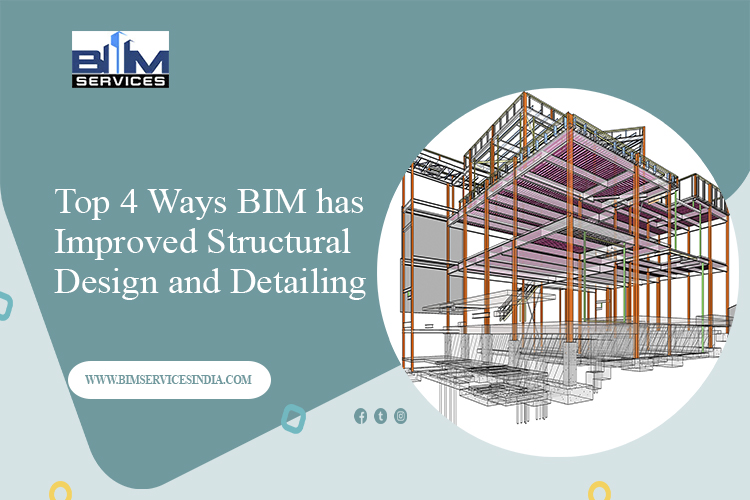Top 4 Ways BIM has Improved Structural Design and Detailing

Thanks to the advent of BIM, the previously tedious and herculean tasks of planning, construction and maintenance of building projects have become increasingly efficient and accurate. Firms in the AEC industry have thrived by adopting BIM. It has helped them gain a competitive edge by allowing them access to improved operational efficiency and enhanced productivity. This blog particularly focuses on the benefits offered by BIM to Structural analysis and detailing.
The main aim of a structural engineer is to design and develop a structure that can withstand all environmental factors as well as applied loads for the duration of its planned existence. For this, they have to determine the appropriate quantity, dimensions, scheduling and installation of materials for accurate structural detailing and analysis. Previously, all of these decisions had to be taken by professionals using estimations and past experiences which often led to mistakes, reworks, delays and budgetary expansions.
Table of Contents
Today, Structural BIM Services have played a crucial role in revolutionizing AEC industry by providing quick and precise output, allowing firms to undertake and successfully execute more projects in a shorter time frame. Discussed below are the top 4 ways BIM has helped improvise structural design and detailing.
Improved Collaboration
BIM enables professionals from all disciplines of the AEC industry to collaborate, coordinate and communicate their efforts onto a single digital model of the building. All authorized personnel have easy access to this model anytime, anywhere and all changes made by any one of these professionals are instantly registered and reflected in the final 3D BIM model of the building. This helps in keeping everyone updated with the latest model in real time and the use of outdates plans and models is avoided.
Enhanced Accuracy
Highly detailed and information-rich structural plans, drawings and documents can be extracted from a coordinated BIM model of a building project. These can be used by fabricators to manufacture appropriate quality, quantity of materials for construction and deliver them to site on schedule for timely installation. Firms also provide Steel Shop Drawing Services that provide contractors and other on-site personnel with drawings extracted from BIM models depicting information of quantity, quality and installation for steel rebars to be used with reinforcement concrete.
Enhanced Visualization
With BIM, it is easy to generate high quality rendering and animation that accurately represent complex structures. This helps structural engineers to convey their ideas through visual presentations, allowing them to explain intricate structural details with greater precision without any communication gaps. The visualization of a structure in its pre-construction stage also helps with predicting the structure’s behavior using stimulation. This aids in design development and optimization by correcting flaws and inconsistencies identified in stimulation test to ensure the structural and foundational integrity throughout the lifespan of the structure.
Time and Cost Efficient
With an ever-rising demand for quick and efficient construction services, it is necessary for firms to adopt BIM. The 4th and 5th dimensions of BIM are concerned with cost and scheduling respectively. These BIM dimensions allow structural engineers to exercise budgetary and scheduling estimations that helps keep track of construction progress while ensuring materials and manpower are not left idle and wasted. These features of BIM help assure stakeholders of budgetary control and optimum utilization of available resources.
Conclusion
Apart from the plethora of benefits that BIM offers to structural engineers, access to an information-rich coordinated BIM model allows them to stay updated with design modifications in real time. It also allows for fewer design efforts, errors and revisions. In all, BIM helps firms to stay relevant and succeed in the AEC industry by augmenting structural engineering through simplified design, enhanced collaboration and precise output with optimum time and resource utilization.